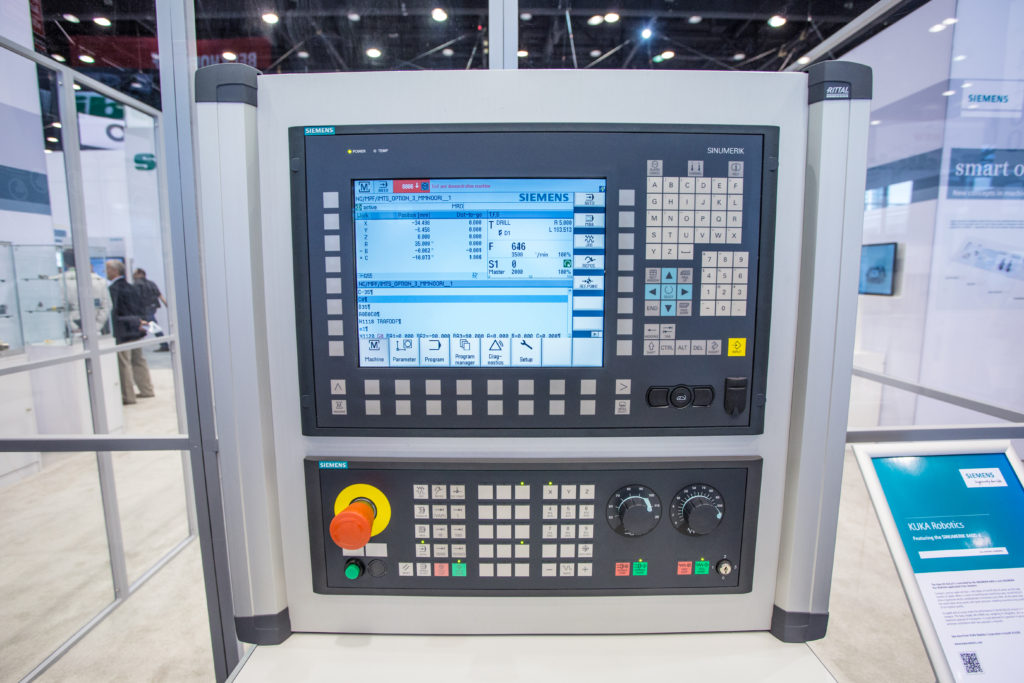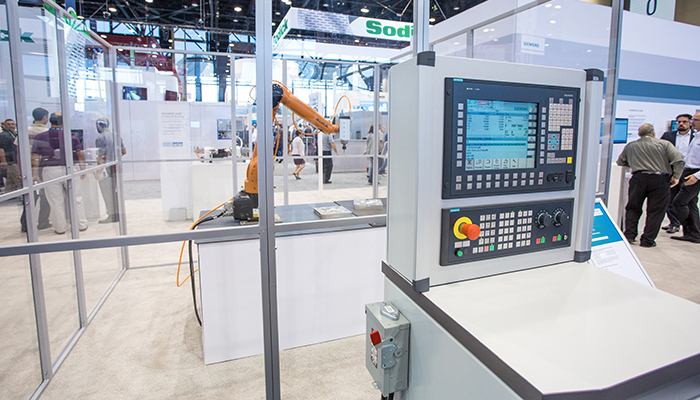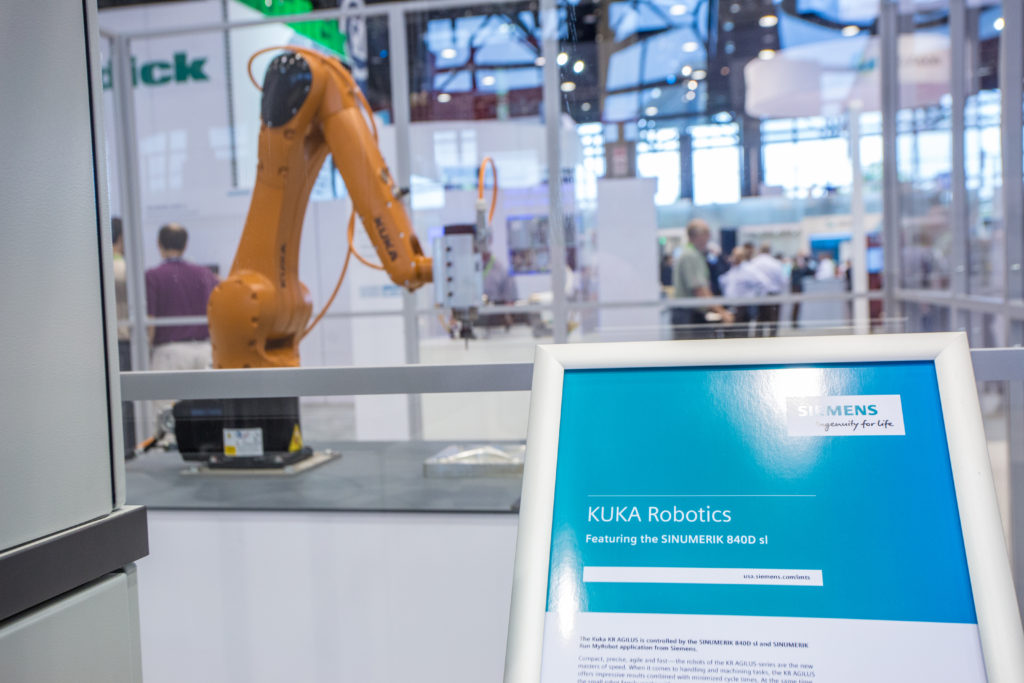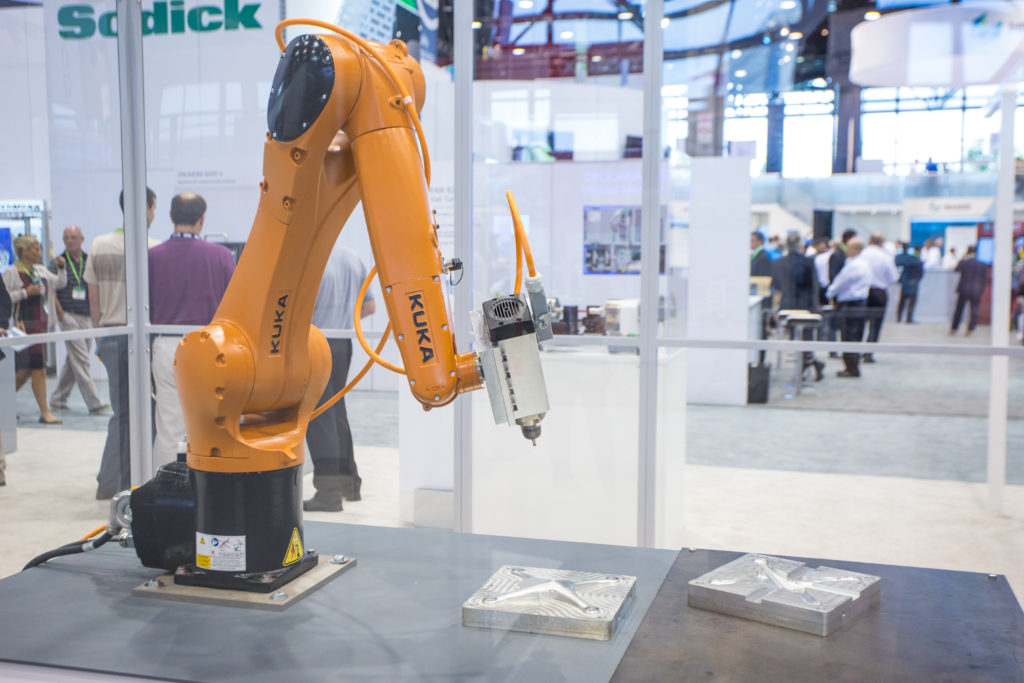Full robotic integration with a CNC onto a 3-axis mill, 5-axis work cell, laser line, press line or full transfer line incorporating multiple machining or metalforming operations would have seemed a distant wish, just a decade ago. As I always tell people nowadays, this is one of the most exciting times in metalworking…because all those things are now being done, every day.
On-the-Fly Programming
Not that long ago, the use of a robot in any machining or metalforming operation required a separate PLC, separate programming language and a completely separate control, with all the knowledge needed to run the robot. Plus, most robotic applications were limited to simple and repetitive part movements.
Today, on an advanced CNC with multi-channel capability, you can dramatically improve the productivity of your machine shop, production department, laser, press brake or fab shop operation. And you can do it without any special knowledge of robot language or all the ancillary hardware and software. Flexible loading and unloading mean the machine spindle, laser head, press brake or stamping die is in use to a far greater degree and that means money to your bottom line.
This fact holds true, even for the short run or disparate part family producers. With the compact robots on the market, plus this integrated CNC control capability, even the smallest shop can today look at robotic solutions in their operations. At short run shops, the on-the-fly program adjustments and teach-in capabilities of the CNC are today proving their worth.
With that dual channel capability onscreen, an operator can use the same control, whether stationary on the machine or on a remote pendant for mobility around the machine or work cell, to run both the machine and the robot.
Advantages for Owner, Programmer, and Operator
For the shop owner, the initial cost of the system is amortizable across the use life of the robot and the improvements in productivity will quickly validate the feasibility and profitability of the system. For the programmer, the function blocks of the robot automation can now be programmed directly via the PLC of the machine tool, then run on the CNC in the same way as the NC cutting or forming programs. This applies to conventional metalcutting, metalforming and even additive strategies alike.
For the programmer, the function blocks of the robot automation can now be programmed directly via the PLC of the machine tool, then run on the CNC in the same way as the NC cutting or forming programs. This applies to conventional metalcutting, metalforming and even additive strategies alike.
For the operator, the simplified set-up and adjustment of the robot to handle a family of short run parts, for example, is easier than ever. Using the HMI on the CNC, an operator can teach the robot what motions to perform in a matter of minutes. With no need of that separate PLC or signal command language, the operator sets up the robot in the same manner as the machine tool, laser, press or other equipment. Likewise, in a work cell, the robot can be sequences to perform a variety of operations at each machine in the cell. Most advanced control suppliers and machine builders already have or will soon have robotic training and maintenance programs in place for you.
These solutions are scalable to suit the requirements of your shop or production department, so robot integration onto a single machine, work cell or fully networked facility can quickly become a cost-effective alternative today.
Best of all, robotic integration is now a feasible option for the OEM machine builder, for retrofit in the shop or for the system integrator looking to help his customer improve the overall productivity of the metalworking department.
Lending a Helping Hand
And there’s more to come. The future will see the machine builder offering a pallet pool concept, applicable in high-volume applications as well as the one-off world of medical implant manufacture and moldmaking. The robot will sense a bar code or RFID tag, position a blank, load the right tools and perform the work, often with a tool in its “hand” to reach pockets, undercuts and other difficult areas on a workpiece. They’ll be able to polish a die set and move seamlessly over a mold surface, with built-in vision onboard plus intelligence to make decisions and overcome errors in all types of piecework, whether subtractive or additive.
Robots can really lend a “helping hand” to all metalworking operations today. And the CNC makes that process a lot easier. Call me with your questions and I can probably tell you about a shop like yours where I’ve seen lasers in action, doing some remarkable work, BOTH in part articulation and actual machining. A “collaboration” worth exploring.
About Siemens USA
Siemens Corporation is a U.S. subsidiary of Siemens AG, a global powerhouse focusing on the areas of electrification, automation and digitalization. One of the world’s largest producers of energy-efficient, resource-saving technologies, Siemens is a leading supplier of systems for power generation and transmission as well as medical diagnosis. With approximately 348,000 employees in more than 190 countries, Siemens reported worldwide revenue of $86.2 billion in fiscal 2015. Siemens in the USA reported revenue of $22.4 billion, including $5.5 billion in exports, and employs approximately 50,000 people throughout all 50 states and Puerto Rico.





















